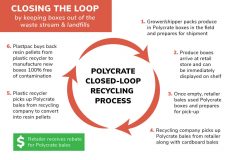by Cindy Sorensen/founder, The Grocery Group
Consumers have a plethora of choices in the grocery store today.
Manufacturers have responded to consumer research to ideate and develop products that will meet changing consumer tastes, trends and demands.
Retailers, too, had to change their merchandising, assortment and pricing strategies to meet the demands of shoppers.
The power wasn’t always in the hands of the consumer. Decades ago – and in the absence of syndicated data, panel data and consumer insights – manufacturers made products with efficiency and cost-effectiveness as the driving factors.
Retailers put those products on their shelves and consumers had few choices within product categories from which to make their purchases. The power was held by manufacturers and retailers.
But a power shift occurred, with shoppers demanding more of a voice in the products available to them. One SKU of orange juice was no longer satisfactory; consumers wanted orange juice with more pulp, no pulp, added calcium, etc.
Manufacturers were faced with losing consumers due to lack of variety in available products, or possibly losing consumers due to higher prices as efficiencies in manufacturing decreased.
Research has taught us much about what consumers are seeking. Not only are they looking for products that meet their desired taste and nutritional profiles, but they are making purchase decisions based on what they know about the entire supply chain.
Consumers have demanded to know more about animal care and production transparency, yet also want to know about the sustainability practices.
This not only applies to the product they consume, but to the packaging used to transport it from farm to manufacturer and from wholesale/retail to the consumer’s kitchen.
I’m quite familiar with many of the sustainability practices that dairy farmers use. However, I’m just beginning to learn more about closed-loop recycling, a practice used for produce.
I recently became aware of a company that operates in this space, so I reached out for an explanation about how this process works and why growers/shippers, wholesalers/retailers and – most importantly – consumers would care about it.
I spoke with Stacey Lessel, regional sales manager with Plastpac, who provided the following:

The movement to switch to sustainable packaging is growing in all areas – grower/shippers, wholesale/retail – to the consumer, who is now driving this movement…because they care about the environment and want produce that is clean from any bacteria. Grower/shippers and retailers also want produce that is fresh with extended shelf life and zero waste.
For decades, the produce industry has been using wire-bound wooden crates as the method of transporting produce from field to consumer. The wood packaging exposes the consumer to a lot of issues regarding safety and cleanliness. Wooden slats leave the box open to dirt and bacteria, easily contaminating them and their contents.
That said, the wooden crate can harbor bacteria and mold while packed and touching the produce, not to mention the hazards of the splinters and sharp ends of the wire for the handlers. And, of course, there is the consideration of our forests, which are cut down for a one-time crate usage.
From wood, the produce industry started to slowly shift to waxed corrugated boxes where the contamination and mold issues were resolved, but there was still a recyclability issue. Millions and millions of pounds of waxed corrugated boxes, which will never degrade, end up in our landfills.
The solution: Plastpac created 100-percent recyclable plastic corrugated Polycrates, which are made with more than 90-percent recycled polypropylene material. We manufacture domestically and ship crates to the grower or packer, allowing them to feel confident that they are shipping in a non-contaminated clean box without needing to insert any plastic liners.
 Closing the loop: When the retailer is done with our Polycrates, they simply knock them down and bundle them as a typical corrugated carton and Plastpac ensures that they never end up in a landfill. The retailers waste services team returns the cartons to us and we once again make a new carton with the recycled material…closing the loop again and again while keeping consumers safe and the landfills uncluttered.
Closing the loop: When the retailer is done with our Polycrates, they simply knock them down and bundle them as a typical corrugated carton and Plastpac ensures that they never end up in a landfill. The retailers waste services team returns the cartons to us and we once again make a new carton with the recycled material…closing the loop again and again while keeping consumers safe and the landfills uncluttered.
I think we are all looking at our world a little differently these days – how we treat it and how we would like to do our part for the good of the earth and our bodies. Closed loop recycling is just one way we can help do our part.
Thanks to Stacey for providing a view into the next generation of produce packaging. Growers, shippers and retailers using a closed-loop packaging recycling program will appeal to shoppers who are looking for improved sustainability practices across the supply chain.
To learn more about Plastpac, click here.

